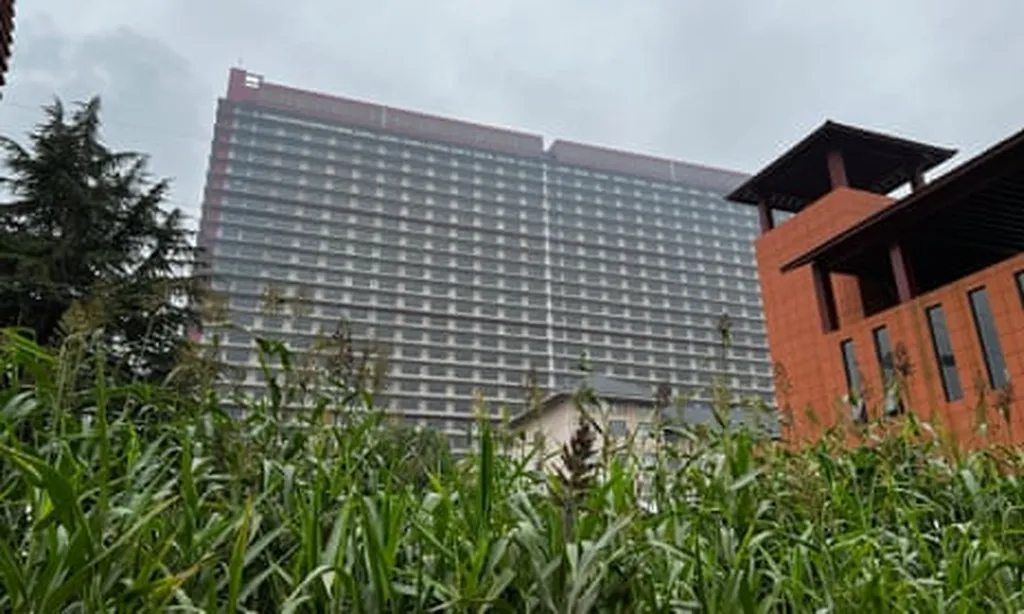In the heart of China’s Hubei province, a groundbreaking project is pushing the boundaries of construction engineering. The Wuhan Optics Valley International Tennis Center, with its 15,000-seat main stadium, is not just a marvel of architectural design but also a testament to innovative structural engineering. The stadium’s retractable steel roof, a complex assembly of primary and secondary trusses, space frames, and sliding steel trusses, is the focus of a recent study published in the journal *Jianzhu Gangjiegou Jinzhan* (Advances in Structural Engineering).
The research, led by Xu Chunli, delves into the intricate process of installing and dismantling such a sophisticated structure. Using advanced finite element analysis software, Midas Gen, the study simulates the entire construction process, providing critical insights into the stresses and deformations that occur during installation and dismantling.
“Understanding the sequence of installation and dismantling is crucial,” explains Xu Chunli. “It ensures that the structure’s deformation, deflection, and member stresses remain within acceptable limits, guaranteeing safety throughout the construction process.”
The implications of this research extend far beyond the tennis center. In the energy sector, where large-scale construction projects are common, the ability to predict and manage structural stresses during installation and dismantling can significantly enhance safety and efficiency. For instance, in the construction of large-scale solar farms or wind turbines, where components are often assembled at great heights, such insights can be invaluable.
Moreover, the study highlights the importance of advanced simulation tools in modern construction. As Xu Chunli notes, “Numerical analysis allows us to anticipate potential issues and optimize the construction process, ultimately saving time and resources.”
The research also underscores the growing trend towards complex, multi-system structures in construction. As buildings and infrastructure become more intricate, the need for sophisticated analysis tools and methods becomes ever more pressing.
In the future, this research could pave the way for more efficient and safer construction practices, not just in sports facilities but across various sectors. As the energy sector continues to evolve, with a growing emphasis on large-scale, complex projects, the insights gained from this study could prove invaluable.
Published in *Jianzhu Gangjiegou Jinzhan*, the study serves as a reminder of the critical role that engineering research plays in shaping the future of construction. As we strive to build taller, stronger, and more efficient structures, the lessons learned from projects like the Wuhan Optics Valley International Tennis Center will be instrumental in driving progress.

